Shortleaf Pine, also known as Old-Field Pine, Rosemary Pine, or Yellow Pine, is a versatile tree species native to the Southeastern United States. Scientifically referred to as Pinus echinata, this member of the Pinaceae family thrives as a woody, native plant in hardiness zones 6 through 9.
Once abundant, the population of Shortleaf Pine has significantly declined over the past 30 years. Efforts are now being made to restore its growth due to its importance to the lumber industry and its crucial role in supporting ecosystem diversity.
This resilient tree is a valuable addition to landscapes and forests, serving both practical and ecological purposes. Its reestablishment highlights its significance as a native species and its contribution to biodiversity in the region.
| Common name | Old-Field Pine, Rosemary Pine, Short-Leaf Pine, Shortleaf Pine, Yellow Pine |
| Botanical name | Pinus echinata |
| Family | Pinaeceae |
| Species | echinata |
| Origin | Southeastern United States |
| Life cycle | Woody |
| Plant type | Native Plant |
| Hardiness zone | 6, 7, 8, 9 |
| Sunlight | Full Sun |
| Maintenance | Low |
| Soil condition | Loam |
| Drainage | Well-Drained |
| Growth rate | Fast |
| Spacing | 24 – 60 ft. |
| Harvest time | Fall |
| Flowering period | Spring |
| Height | 8- 100 ft. |
| Leaf color | Blue |
| Fruit color | Brown, Copper |
| Garden style | Butterfly Garden |
| Uses | Woodland |
I. Appearance and Characteristics
The shortleaf pine or Pinus echinata is a species of coniferous tree endemic to the United States. The shortleaf pine is sometimes referred to as the “old field”, “spruce”, “rosemary”, “yellow”, “two-leaf” and “heart” pine. The common name “shortleaf pine” may refer to other species like loblolly pine (Pinus taeda), based on a custom in the Southeastern United States to only refer to pines as either “long-leaf” or “short-leaf”. However, P. echinata can be distinguished from other pines by examining its short leaves and small cones.
The shortleaf pine is in the Pinus subgenus. The epithet of echinata means “spiny” and refers to “hedgehog”, from echinus. It naturally hybridizes with Pinus taeda; the hybrid typically has a closer resemblance to P. echinata. It was named by Phillip Miller, and the date of publication was April 16, 1768.
The tree is variable in form, sometimes straight, sometimes crooked, with an irregular crown. The tree reaches heights of 80–100 feet. In areas that have optimal growing conditions, the height reached is between 24–27 m (100 to 120 ft). The trunk diameter ranges between 0.5–0.9 m (1+1⁄2–3 ft) and averages between 0.6–0.9m (two to three ft).
The leaves are needle-like, in fascicles (bundles) of two and three mixed together, and from 7–11 centimeters (2+3⁄4–4+1⁄4 inches) long. The cones are 4–7 cm (1+1⁄2–2+3⁄4 in) long, with thin scales with a transverse keel and a short prickle. They open at maturity but are persistent. Shortleaf pine seedlings develop a persistent J-shaped crook near the ground surface. Axillary and other buds form near the crook and initiate growth if the upper stem is killed by fire or is severed.
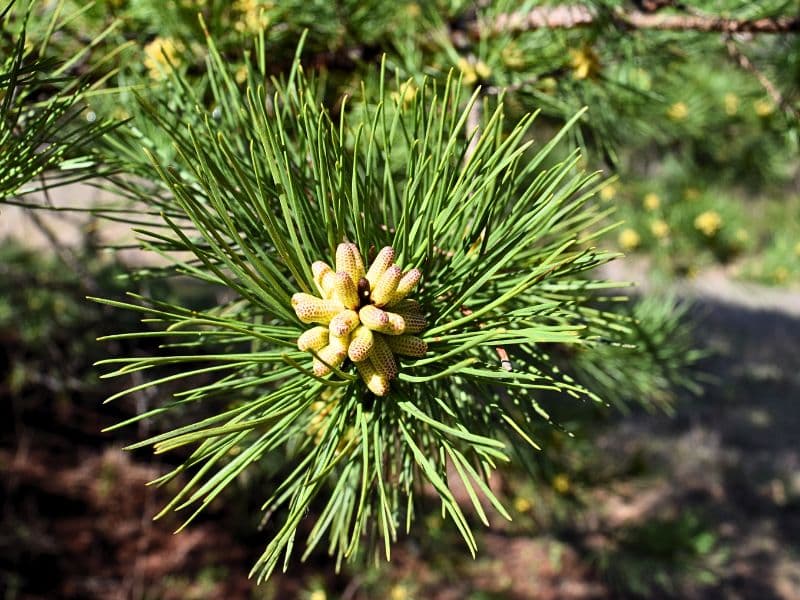
The bark has resin pockets (sometimes called pitch patches), which form small depressions, less than 1 millimeter (1⁄32 in) in diameter. This feature can be used to distinguish P. echinata from all other Pinus species within its native range. For example, the bark of a loblolly tree is slightly darker, thicker, and more furrowed and rigged in comparison to the shortleaf pine at the beginning of its lifespan, but when it starts maturing these differences fade; however, the resin pockets are still visible on shortleaf pine and can used for identification.
The crown is a pyramidal head that contains several small branches. It does not change much throughout the tree’s lifetime.
The tree has very strong roots, and thus it is able to withstand high winds; additionally, the tree can survive in very dry conditions. The roots are able to reach great depths to search for water. It is believed the roots are this long due to the wide range of the species that consequently experiences varying climate.
Shortleaf pine can be found in a variety of soils including, stiff clay, gravel, and sand. Although the species is not soil-specific, they do not thrive in wet or very poorly drained conditions.
II. How to Grow and Care
Sunlight
Shortleaf pine thrives in full sun, requiring such conditions for optimal growth and development. The intensity of direct sunlight promotes vigorous growth and increases overall plant health. Shortleaf pine’s tolerance to partial sun allows it some flexibility, though extended periods in lower light could lead to reduced growth vigor and a sparser canopy. Outdoors, shortleaf pine should be planted in areas with clear exposure to sunlight. Adaptive traits such as needle arrangement and reflective bark help shortleaf pine maximize light absorption and minimize damage from intense sun exposure, ensuring resilience in a range of sunny environments.
Temperature
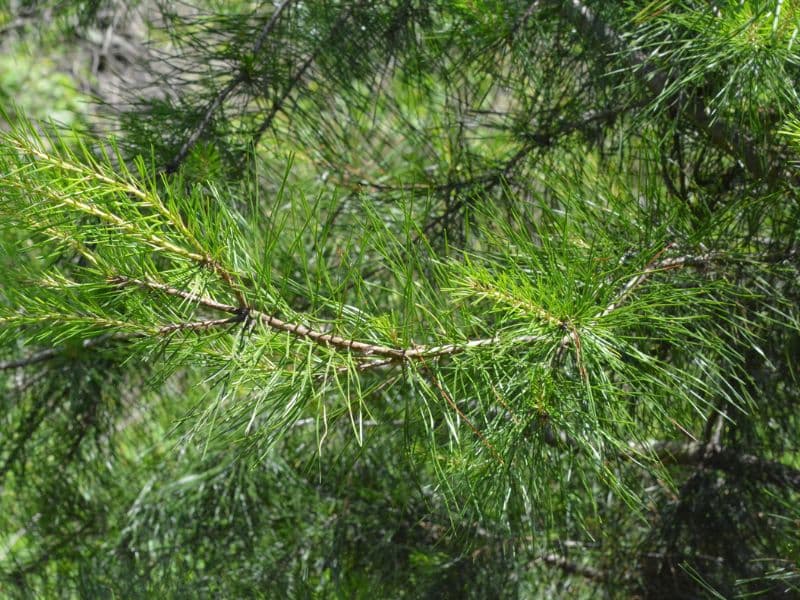
The shortleaf pine is mostly native to the northern hemisphere and can withstand many challenging environmental conditions. Tolerant of temperatures ranging between -60 to 50 ℃, making it suitable for hardiness zones 11 and below, this is a plant that grows best in well-drained, deep and moist soil.
Watering
Shortleaf pine thrives in its native habitat, which consists of well-drained soils within temperate coniferous forests. It has adapted to cope with occasional droughts, showing a preference for moderate moisture levels without being waterlogged. Care should involve watering once every 1-2 weeks, ensuring the soil dries slightly between sessions. As an evergreen plant, shortleaf pine maintains hydration in its needles year-round, making it less demanding during the dormant winter months but requiring consistent moisture during active growth periods.
Soil
Shortleaf pine can grow in a variety of different soil types, including bare mineral soil, sandy soil, volcanic ash, calcareous soil, limestone soil, and everything from dusty soil to red soil. Since it is resistant to drought, it will even grow in barren landscapes. However, it grows best in loose, fertile, well-drained, and slightly acidic soil. In the case of too much alkalinity, needles of potted plants will turn yellow and fall, so it is best to use natural mountain soil in pots and containers.
Fertilizing
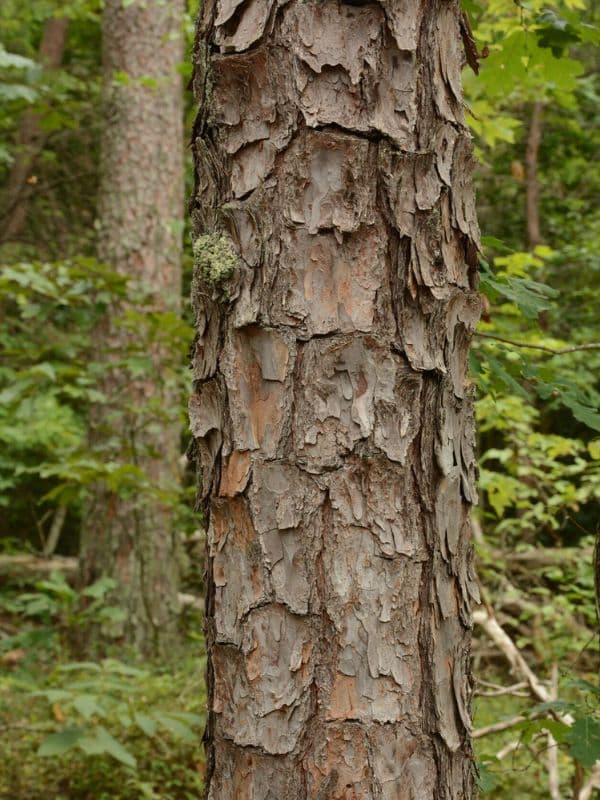
Fertilizing shortleaf pine with balanced nutrition fertilizer ensures robust growth. Apply every 3-4 months during active growth, using manufacturer’s recommended dose, generally 1-2 pounds per inch of trunk diameter. The benefits include strengthened resilience and potential for faster recovery post-stress. Seasonal variations demand reduced quantities in autumn to prevent tender growth that’s vulnerable in winter. Safety tip: Avoid over-fertilization as it can harm shortleaf pine’s root system. For efficacy, water after application to help soil absorption.
Planting Instructions
Shortleaf pine is best planted in early spring. Ideally, use healthy and vigorous seedlings with soils balls, as this can greatly improve the survival rate. In the case of many lateral roots, the deep main root can be cut. Otherwise, the root system should be protected to avoid damage., Plant in a high, dry, well-drained, and well-ventilated place, with loose soil.
In low-lying places with accumulated water, or places with sticky soil, try building a platform or changing the soil before planting. The planting pit should be treated with a basal fertilizer before planting. Newly planted large seedlings should be supported to prevent them being blown down by the wind.
Before planting, excess branches should be pruned off. Protect the plant’s shape from damage as much as possible, as this will help to restore growth at a later stage., Ideally, plant indoor potted plants in the spring, and repot every two or three years in the late fall or early spring. Repotting too frequently will lead to the death of the plant. If the plant is growing weakly, find out the cause of this and change the flowerpot soil, or replant in a larger pot.
Cut back on water before repotting, so as to keep the soil slightly dry. Remove the soil ball from the pot, keeping it whole, and then prune away any old roots from the bottom and sides. Remove some of the old soil from the middle of the soil ball, replace with new soil, apply a small amount of basal fertilizer, and then cover the plant with new soil. Ensure a suitable pot size – a deep pot will easily accumulate water, leading to root rot.
Pruning
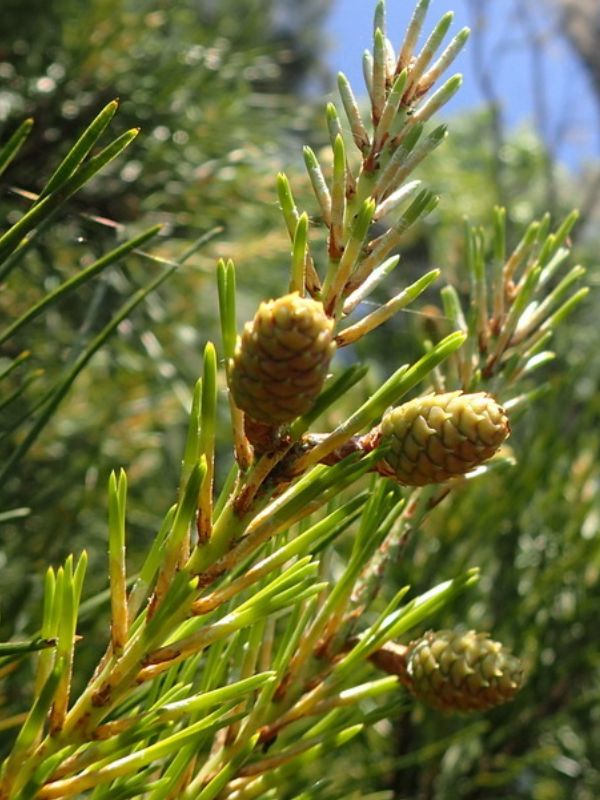
For an indoor potted plant, any dead, diseased or damaged branches should be removed. You can then adjust the tree’s shape by pruning branches, pinching buds, and trimming leaves, giving you a better ornamental effect. Prune the plant before all of its needles fall off, so as to obtain a compact shape, richer lateral and side branches, and a better form overall. Pruning should be done during the dormancy period, so as to prevent excess loss of sap and damage to the plant’s vigor.
For a plant in a garden, dense lateral branches should be pruned so as to improve the survival rate. Remove excess lateral branches during the vigorous growth period based on needs, focusing on encouraging the trunk to grow tall and straight. Cut off any diseased or dead branches right away, so as to prevent the spread of pathogens.
Propagation
Shortleaf pine is mainly propagated by seeds or branch cuttage. For family planting or potting, cultivated seedlings or pruned potted plants can be purchased from the market. Pay attention to pests, diseases, and appearance when selecting seedlings.
Transplanting
Transplanting shortleaf pine is best done during mid-autumn to late-winter, when the tree is in a dormant stage. This enhances root establishment without stressing the plant. Shortleaf pine favors sunny locations with well-drained soils. Be sure to handle with care, as their root system is delicate.
III. Uses and Benefits
- Ornamental uses
Shortleaf pine is a popular ornamental pine to use in sandy coastal gardens and woodland gardens. When it’s small, it works well as a screen in gardens, but when it’s larger, it makes a good specimen or border tree. The evergreen needles provide year-round interest in sunny locations. The needles are unappetizing to deer, but butterflies and birds will flock to this tree.
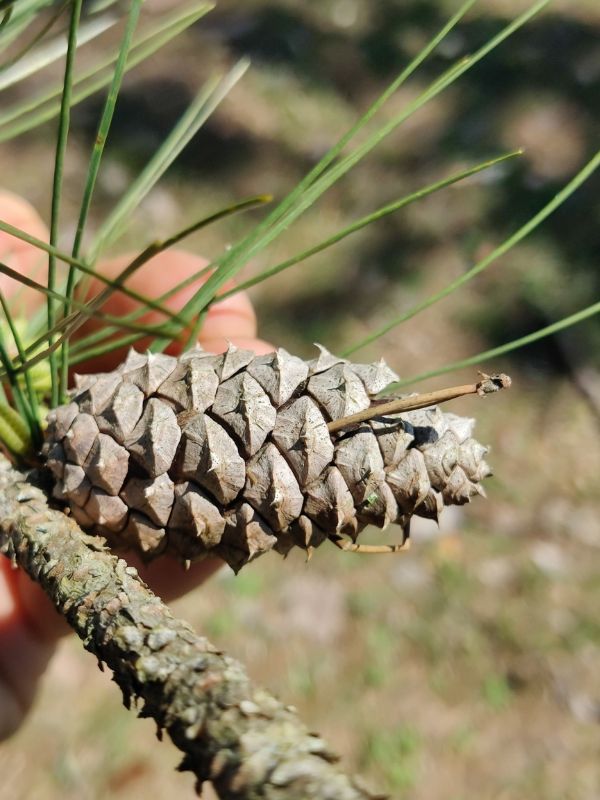
- Medicinal uses
The turpentine that is found in the resin of the tree can be used for treatment of the kidney and bladder. It can be used for treating rheumatic infections as a rub or steam bath; it can also be used internally. It has proven useful for treating respiratory illnesses, such as influenza, coughs, colds, and TB. It can also be used dermally for burns, sores, wounds, and boils.
- Other uses
Shortleaf pine is a source of wood pulp, plywood veneer, and lumber for a variety of uses. The shortleaf pine is one of the southern US “southern yellow pines”; it is also occasionally called southern yellow pine or the shortstraw pine. The wood from the shortleaf pine is used commercially for creating flooring and beams. In the past, it was used in building ship masts, and in the 1800s during the Revolutionary War it was a major timber source for homes. The shortleaf pine is famous for lightwood, also known as fat wood: a resinous wood that is well known for lighting fires. A strong fire with this wood only requires a kitchen match.
Find Where to Buy the Best Shortleaf Pine (Pinus echinata)


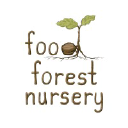















Leave a Reply